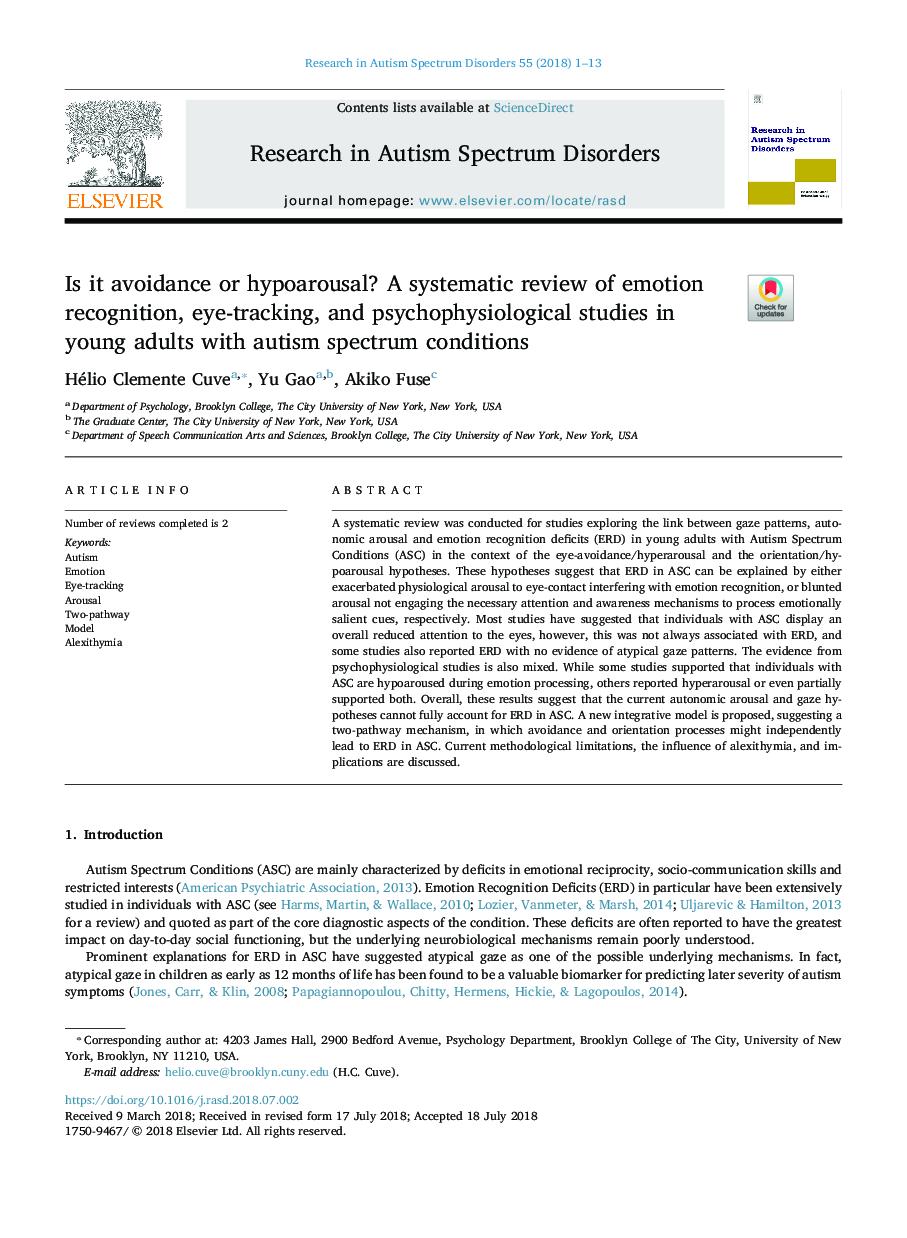| Article ID | Journal | Published Year | Pages | File Type |
|---|---|---|---|---|
| 9952036 | Research in Autism Spectrum Disorders | 2018 | 13 Pages |
Abstract
A systematic review was conducted for studies exploring the link between gaze patterns, autonomic arousal and emotion recognition deficits (ERD) in young adults with Autism Spectrum Conditions (ASC) in the context of the eye-avoidance/hyperarousal and the orientation/hypoarousal hypotheses. These hypotheses suggest that ERD in ASC can be explained by either exacerbated physiological arousal to eye-contact interfering with emotion recognition, or blunted arousal not engaging the necessary attention and awareness mechanisms to process emotionally salient cues, respectively. Most studies have suggested that individuals with ASC display an overall reduced attention to the eyes, however, this was not always associated with ERD, and some studies also reported ERD with no evidence of atypical gaze patterns. The evidence from psychophysiological studies is also mixed. While some studies supported that individuals with ASC are hypoaroused during emotion processing, others reported hyperarousal or even partially supported both. Overall, these results suggest that the current autonomic arousal and gaze hypotheses cannot fully account for ERD in ASC. A new integrative model is proposed, suggesting a two-pathway mechanism, in which avoidance and orientation processes might independently lead to ERD in ASC. Current methodological limitations, the influence of alexithymia, and implications are discussed.
Related Topics
Life Sciences
Neuroscience
Behavioral Neuroscience
Authors
Hélio Clemente Cuve, Yu Gao, Akiko Fuse,
